| 25 June |
• yesterday • tomorrow |

William of Monte Vergine
Born to the Italian nobility. Orphaned as an infant, and raised by relatives. Pilgrim to Santiago de Compostela, Spain at age 14. There he decided on a life devoted to God. Hermit for two years at Monte Solicoli where he healed a blind man. Friend of Saint John of Pulsano. Started a pilgrimage to the Holy Lands, but discerned that he would be of more use to God in Italy.
Hermit at Monte Vergiliano (Monte Vergine). There his reputation for holiness attracted many disciples. In 1119 he formed them into the Hermits of Monte Vergine (Williamites) with a Rule based on the Benedictines; five other houses were formed by its members during William's life, but only the original survives today. When some of the hermits began to grumble that William's austerities were too hard to match, he, Saint John, and a small handful of brothers left in order not to be a cause of dissension.
When their hermitage burned, the Williamites moved to Monte Cognato, and into the area of Naples, Italy. Advisor to King Roger I of Naples who built him a hermitage at Salerno, Italy. Founded monasteries in the Naples region.
Legend says that William began mining the stone and digging the foundations for the church on Montevergine when his only companion and helper was a single donkey. One evening, a wolf charged from the forest, killed and ate the donkey. William ordered the wolf to take the donkey's place. The wolf, understanding that he had interrupted God's work, bowed his head, and began hauling the loads of stone. Tradition says that the same wolf still prowls the mountain, ready to help those who are in danger and call upon the name of the Virgin Mary.
1085 at Vercelli, Italy
25 June 1142 at Guglietto, Italy of natural causes
Irpinia, Italy
• pilgrim, usually near Santiago de Compostela, Spain
• abbot near a wolf wearing a saddle
• receiving an appearance by Christ
• saddling a wolf that killed his donkey
• wolf
https://catholicsaints.info/saint-william-of-vercelli/
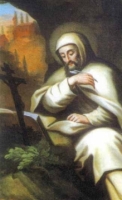
Born to the Venetian nobility, the son of Francesco Giustiniani and Paola Malipiero. Studied theology and philosophy at the University of Padua. Pilgrim to the Holy Lands in 1507 which left with a desire for the religious life. Joined the Camaldolese hermits in 1510. He became a travelling reformer, going from one hermitage to another to help them returned to proper Camaldolese discipline and teaching. Part of the general chapter of 1513 that helped unify and regularize the conventual and hermitic sections of the Camaldolese. Prior of the hermitage in Camaldoli, Italy from 1516 to 1520. Ordained a priest in 1518.
While serving as prior, Blessed Paolo obtained permission from Pope Leo X to found a order of hermits devoted to the original rule as written by Saint Romuald. He founded the Society of Saint Romuald, also known as the Camaldolese Hermits of Monte Corona or Montecoronesi in 1520. Founded the hermitage of Monte Cucco in 1521, and wrote the constitutions of the new Order in 1522. In 1524 the four existing hermitages held their first general chapter and chose Paolo as their Prior-General. Imprisoned briefly in Macerata, Italy and then in 1527 in Rome, Italy when the city was sacked by the mercenary Lutheran Lanzichenecchi; he was imprisoned and tortured with Saint Gaetano da Thiene but escaped.
15 June 1476 in Venice, Italy
• 25 June 1528 in the hermitage of San Silvestro de Monte Soratte, Rome, Italy of natural causes
• buried in the nearby crypt of San Silvestro, his grave was lost over the years when the hermits had to abandon the site
• relics re-discovered in 1932
Society of Saint Romuald
https://catholicsaints.info/blessed-paolo-giustiniani/
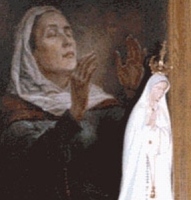
• Dorota z Matowów
• Dorothea of Montau
• Dorothea Swartz
• Dorothea von Montau
• Dorthea von Montau
Peasant, one of nine children. Married at age 17 a wealthy swordsmith named Adalbert or Albrecht of Prague (in modern Czech Republic). Bore nine children, only one of whom survived; the girl became a Benedictine nun. Difficult marriage; she suffered abuse from her husband, but she encouraged him in his trade and his faith. Went on a pilgrimage to Rome, Italy in 1389, fell ill, and was forced to stay for many weeks, during which time her husband died at home. Widow. Nun at Marienwerser. Great devotion to the Blessed Sacrament; the absorption of the Eucharist "agitated her like boiling water; had she been allowed, she would willingly have torn the host from the priest's hands to bring it to her mouth...." Lived in a 6x9 foot cell. Visionary. Prophetess. Miracle worker.
6 February 1347 at Gross Montau, Prussia, one of the states of the Teutonic Knights (modern Matowy Wielkie, Poland)
25 January 1394 at Marienwerder, Kwidzyn, Prussia (in modern Poland) of natural causes
9 January 1976 by Pope Paul VI (cultus confirmed)
• nine children
• lantern
• rosary
• holding the Book of Revelations, a rosary and five arrows
• brides
• death of children
• difficult marriages
• parents of large families
• widows
• Pomerania
• Prussia
https://catholicsaints.info/blessed-dorothy-of-montau/
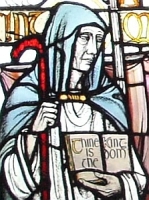
Lua, Luan, Luanus, Lugaid of Les Mór, Lugaidh, Lugide Lis Moer, Luoch, Mallock, Molaug, Molluog, Moloag, Molua, Moluag, Murlach
Born to the Irish nobility. Educated in Bangor Abbey, Ireland. Spiritual student of Saint Comgall of Bangor. Legend says that one day as Moloc stood on a rock on the Irish shore, the rock broke away, sailed across the sea, and came ashore on the island of Lismore in Loch Linnhe. However he travelled there, Moloc and Saint Comgall worked as missionaries in Scotland, Moloc ranging far and wide to the Picts. Founded monasteries on the Isle of Lismore, and at Rosemarkie and Mortlach in the territory of the Picts; Saint Malachy claims that Moloc founded 100 monasteries in Scotland.
c.530 in northern Ireland
• 25 June 592 in Rosemarkie, Scotland of natural causes
• buried at Rosemarkie
• remains later moved to the Isle of Lismore and re-interred in the cathedral named for him
• some relics enshrined in Mortlach, Banffshire, Scotland in a monastery founded in 1010 in thanks for a victory obtained through the intervention of Saint Moloc
• his crozier is in the possession of the Livingstone chief of Clan LacLea as an hereditary trust
1898 by Pope Leo XIII (cultus confirmation)
• against mental illness
• Argyll, Scotland
https://catholicsaints.info/saint-moloc-of-mortlach/
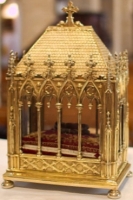
Tecla, Thecla, Thècle, Tigride, Tigris
Lay woman in the late 6th or early 7th century from Maurienne, Gaul (in modern France) swore that she would obtain a relic of the body of Saint John the Baptist, to whom she had a great devotion, and bring it back to her city. Having travelled to a shrine that was supposed to contain such relics (possibly in Sebaste or Alexandria, Egypt or somewhere in the Holy Lands; records vary), she was told that she could not have any of them. Rather then give up, she took up a life of fasting and prayer in front of the shrine, asking that Saint John provide her with a relic. After three years of this, a shining thumb suddenly appeared over the altar. Tigre put it in a small, golden reliquary, and went home. She gave the relic to the keeping of the cathedral (today Saint-Jean-de-Mauirenne), gave away her remaining possessions, and lived the rest of her life as a hermit, seeing other people only when she went to Mass. Saint Gregory the Great recounts her story as an example of perseverance, as described in Luke 11:8 – "I tell you, if he does not get up to give him the loaves because of their friendship, he will get up to give him whatever he needs because of his persistence."
Valloires, Mauirenne, Gaul (in modern France)
https://catholicsaints.info/saint-tigre-of-maurienne/
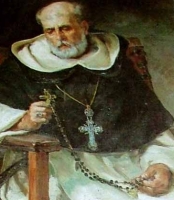
• Dominic Henares
• Domingo Henares
24 November as one of the Martyrs of Vietnam
Born to a poor family. Joined the Dominicans at the Santa Croce monastery in Granada, Spain in 1783. Missionary to the area of modern Vietnam, sailing on 29 September 1785 and arriving in the Philippines on 9 July 1786. While studying theology at the College of Saint Thomas in Manila, he was assigned to teach, as well. Priest, ordained on 18 September 1790. Chosen co-adjutor vicar apostolic, with Saint Ignatius Delgado, of Eastern Tonkin, Vietnam and titular bishop of Fez on 9 September 1800 by Pope Pius VII. Bishop of Phunhay, Vietnam in 1803. Arrested with Saint Francis Chieu at the beginning of the government persecutions of Christian missionaries. Martyr.
19 December 1765 at Baena, Córdoba, Spain
• beheaded on 25 June 1838 in Nam Ðinh, Vietnam
• relics enshrined in Bui-Chu, Vietnam
19 June 1988 by Pope John Paul II
https://catholicsaints.info/saint-domingo-henares-de-zafra-cubero/

Febronia of Sebapte
Beautiful young woman at Nisibis, Mesopotamia who had dedicated her life to God. During the persecutions of Diocletian, she was arrested for her faith. She was offered freedom if she would renounce Christianity, marry Diocletian's nephew Lysimachus, and stop him from joining the Church; she declined. Tortured, mutilated and murdered. Lysimachus, who had been leaning toward Christianity to begin with, converted along with many of the witnesses to Febronia's abuse; the judge, Selenus, went insane and killed himself.
This story became immensely popular, and in some of the re-tellings the tortures were described in ghastly detail. However, it was unknown before the 7th century, was embellished each time, and modern scholars believe it is likely to be fiction.
3rd century
304
holding a palm of martyrdom and the shears used to cut off her breasts
https://catholicsaints.info/saint-febronia-of-nisibis/
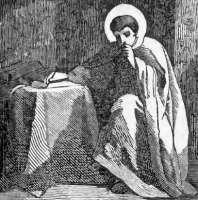
• Prosper of Aquitaine
• Prospero, Tiro
A good student in his youth, especially of the work of Saint Augustine of Hippo; Prosper was known throughout his life for his holiness and purity. As an adult, Prosper moved from Aquitaine to Provence and settled near Marseilles, an area plagued with heresies. A layman, Prosper worked to increase these people's understanding, and to educate them in their mistakes. He became widely known for his work converting heretics, sometimes leading pilgrimages to Rome, Italy so heretics could hear the truth staight from the Pope. Secretary to Pope Saint Leo the Great in 440; he used the position to spread truth and teach against heresy, fighting endlessly against semi-Pelagianism.
c.403 at Aquitaine (in modern France)
c.460 of natural causes
• Reggio Emilia, Italy
• Romano Canavese, Italy
https://catholicsaints.info/saint-prosper/
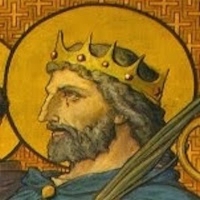
• Solomon III of Brittany
• Selyf of...
King of Brittany (in modern France). Military leader who fought both Franks and Northmen; the Bretons count him among their national heroes. He repented for the crimes of his youth and when he was murdered, he was proclaimed a martyr.
• 25 June 874
• buried at the monastery of Plélan
• body taken to Pithiviers, diocese of Orléans, France during Norman invasions
• a church was erected in is honour in Pithiviers
• some relics taken to the church of Saint-Salomon in Vannes, France
• church destroyed in 1793 in the anti-Catholic persecutions of the French Revolution and relics to the cathedral in Vannes
https://catholicsaints.info/saint-solomon-iii-of-bretagne/
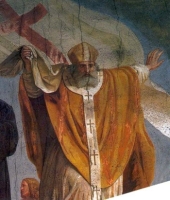
First known bishop of Turin, Italy. In 451 he attended the synod of Milan where northern Italian bishops accepted the letter of Pope Leo I which set forth the orthodox doctrine of the Incarnation. Attended the the Synod of Rome in 465. Theological writer with 118 homilies, 116 sermons, and 6 treatises surviving.
Legend says that a cleric one day followed him with evil intention to a retired chapel. The cleric suddenly became so thirsty that he implored Maximus for help. A roe happened to pass by, which Maximus caused to stop so the cleric could drink its milk.
c.380 at Rhaetia (in modern Switzerland)
c.466 of natural causes
Turin, Italy
bishop pointing at a roe
https://catholicsaints.info/saint-maximus-of-turin/
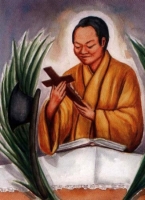
• Francis Do Minh Chieu
• Francesco Do Minh Chieu
24 November as one of the Martyrs of Vietnam
Raised in a Christian family. Layman catechist in the apostolic vicariate of East Tonkin (modern Vietnam). Devoted himself to helping missionary priests. Aide to bishop Saint Dominic Henares de Zafra Cubero, with whom he was arrested and murdered in the persecutions of emperor Minh Mang.
c.1797 at Trung Le, Liên Thùy, Nam Ðinh, Vietnam
• beheaded on 25 June 1838 in Nam Ðinh, Vietnam
• relics enshrined in Bui-Chu, Vietnam
19 June 1988 by Pope John Paul II
https://catholicsaints.info/saint-phanxico-do-van-chieu/
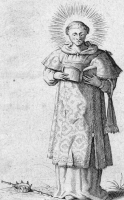
Adelbert, Aedelbert, Aedelbertus
Member of the Northumbrian royal family. Spiritual student of and fellow evangelist in Ireland with Saint Egbert of Rathemigisi. Deacon at Rathemigisi monastery. Evangelized in Friesland with Saint Willibrord in 690. Converted most of the people of Egmond by his preaching and his example. May have been abbot of Epternach; records are unclear. Archdeacon of the diocese of Utrecht, Netherlands.
in Northumbria, England
• c.740 of natural causes
• miracles reported at his tomb which became a pilgrimage site
fountain springing up on the opening of his tomb
https://catholicsaints.info/saint-adalbert-of-egmond/
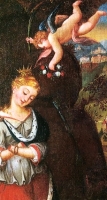
Orosia
Born to the nobility. Promised in an arranged marriage to a Moor, she hid in a cave, but the smoke from her fire gave away her position. She was dragged from the cave by her hair and martyred. Very popular cultus throughout southern France and northern Italy.
714
1902 by Pope Leo XIII (cultus confirmation)
• against bad weather
• diocese of Jaca, Spain
• severed hand
• woman with no hands
• palm of martyrdom
• being brought a palm of martyrdom by an angel
https://catholicsaints.info/saint-eurosia/
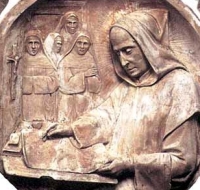
John of Spain
Migrated to France as a boy. Studied at Arles, France. Carthusian monk at Montreuil, France. Transferred to the Grande Chartreuse under Saint Anthelm of Belley. Founder and first prior of the charterhouse of Reposoir near Lake Geneva, Switzerland. Drew up the first constitutions for the Carthusian nuns.
1123 at Almanza, Spain
1160 of natural causes
1864 by Pope Pius IX (cultus confirmed)
https://catholicsaints.info/blessed-john-the-spaniard/
Cyniburg, Kineburga
A princess who wished to devote herself to God; to avoid an arranged marriage she fled to Gloucester and worked as a maid for a baker. The baker‘s wife, jealous of the young woman, killed her and threw her body into a well. Her body was recovered and buried nearby. Miracles began to be reported at her graveside, and when the relics were moved, the miracles followed them.
relics translated by Archbishop Courtenay and Bishop Henry Wakefield of Worcester on 10 April 1390
https://catholicsaints.info/saint-cyneburga-of-gloucester/
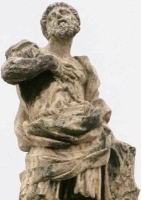
Ranking officer in the imperial army of Constantine the Great. Roman consul. In 330 he retired from his military and political duties, moving to Ostia where he founded a hospital and spent the remainder of his life caring for the sick. In earlier times times he was described as being exiled to Alexandria, and martyred, but this was apparently not the case.
c.362
https://catholicsaints.info/saint-gallicanus/
• Henry of Olomouc
• Henry of Olmütz
Bohemian prince; son of King Wratislas I. Bishop of Olmutz (in the modern Czech Republic) in 1126. During a pilgrimage to Palestine in 1137, he joined the Premonstratensian order at Jerusalem. On his return home, he introduced the order in several places in his diocese, and found them an abbey at Strahov (in modern Prague).
1150 of natural causes
https://catholicsaints.info/blessed-henry-zdick/
Burkhard
Benedictine monk at the monastery of Saint Michael in Bamberg, Bavaria, Germany. First abbot of the monastery of Mallersdorf in Bavaria in 1109.
11th century in the Upper Franconia (in modern Bavaria, Germany)
• 25 June 1122 in Mallersdorf, Bavaria, Germany
• relics enshrined in 1695
https://catholicsaints.info/blessed-burchard-of-mallersdorf/
Dominican friar. Taught philosophy and theology. Founded a friary at Ragusa. Served as General Inquisitor for the kingdom of Naples (in modern Italy.
at Naples, Italy
1391 of natural causes
1612 by Pope Paul V (cultus confirmed)
https://catholicsaints.info/blessed-guy-maramaldi/
Mercedarian friar. Went on several missions to ransom Christians enslaved by Muslims in Andalusia, Spain, and in Morocco; he freed over 200, preaching Christianity all along the way.
1287 of natural causes
https://catholicsaints.info/blessed-fulgentius-de-lara/
Lucy
One of a group of 3rd century Christian prisoners of war who were sent to Rome, Italy by emperor Probus where they were publicly martyred; we do not have the names of the others.
c.260 in Rome, Italy
https://catholicsaints.info/saint-luceias/
Amandus, Amantius, Amatius
Founder and first abbot of Saint-Amand de Coly monastery, diocese of Limoges, France.
6th century
https://catholicsaints.info/saint-amand-of-coly/
Married to Saint Gwen; father of Saint Cuby. Lived in Brittany in modern France. Murdered by heathens.
Cornwall, England
5th century Brittany, France
https://catholicsaints.info/saint-solomon-i/
Bishop of Nantes, France. Martyred with a number of priests and monks by Norwegian Viking invaders as he was celebrating Mass.
843
https://catholicsaints.info/saint-gohard-of-nantes/
Levan, Levin, Selevan, Selyr, Silvanus
Sixth century hermit in Saint Levan, Cornwall, England.
https://catholicsaints.info/saint-selyf-of-cornwall/
Seventh century spiritual student of Saint Brendan. Bishop of Lismore in Argyll, Scotland.
https://catholicsaints.info/saint-molonachus-of-lismore/
Fifth bishop of Embrun, France.
c.540
https://catholicsaints.info/saint-gallicanus-of-embrun/
• Our Lady of Grace
• Celidonius of Besançon
• Sincheall of Killeigh
• Sosipater of Corfu
CatholicSaints.Info Portable Edition